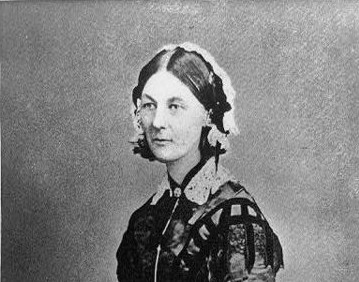Florence Nightingale's role in the war
Those British troops wounded from fighting on the Crimean Peninsula were shipped across the Black Sea to medical stations in Turkey. These stations were poorly staffed, with insufficient supplies, and the medical and sanitary conditions were awful. This terrible state of affairs was reported by the media in Britain. Thirty eight voluntary nurses, amongst them Florence Nightingale, travelled to Turkey to help relieve the situation.
Nightingale proved herself to be hugely resourceful. Her competence and generosity were reported back in Great Britain. The Times Newspaper described her deeds in the following excerpt.
She is a 'ministering angel' without any exaggeration in these hospitals, and as her slender form glides quietly along each corridor, every poor fellow's face softens with gratitude at the sight of her. When all the medical officers have retired for the night and silence and darkness have settled down upon those miles of prostrate sick, she may be observed alone, with a little lamp in her hand, making her solitary rounds.
Nightingale became known as 'The Lady with the Lamp' after these words were published in the Times.

Florence Nightingale
Diseases such as typhus, typhoid, cholera, and dysentery were rife in the army hospitals. Many more soldiers were dying from diseases than from wounds. Nightingale worked towards improvements in sanitation, nutrition, and activity for the patients of the hospitals. Death rates were reduced dramatically with the introduction of such measures. Nightingale kept meticulous records of the number of deaths, and the causes of deaths, so that on her return to Great Britain she could justify the need for improving conditions in hospitals.
Following Nightingale's return to Great Britain and her campaign for better living conditions for the army, the Royal Commission on the Health of the Army was created. Nightingale prepared an 800 page report for the commission on the welfare of the army. She advocated the use of statistics as a tool in decision making. Nightingale created graphs to demonstrate that more soldiers died in the Crimean War from disease than from wounds. Many of these graphs were of a particular flower like type, and are now described as coxcombs.
Source : http://understandinguncertainty.org/node/204


